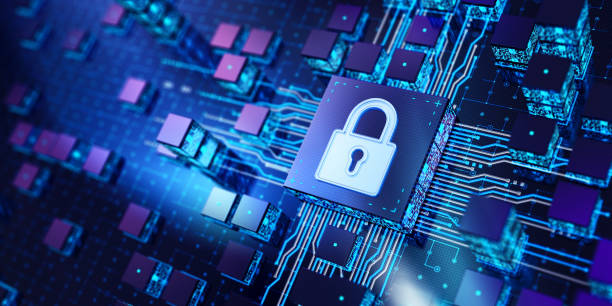At 3:47 AM on a humid July night in 2021, the screens across a hospital in Jacksonville, Florida, suddenly froze. Monitors displaying vital signs went black. Electronic medical records became unreadable. Phone lines crackled with static. Nurses stared in horror as computer after computer blinked to a crimson message:
“Your files are encrypted. Pay $4.3 million in Bitcoin within 72 hours, or your data will be destroyed.”
Outside, streetlights glowed peacefully over the empty parking lot, the hush of summer cicadas betraying none of the chaos inside. But within that hospital’s walls, life hung in the balance. Patients awaiting surgeries were rerouted to distant facilities. Cancer treatments were delayed. Ambulances were diverted to other emergency rooms. Doctors cursed and pounded on lifeless keyboards as their patients’ records disappeared behind a veil of encryption.
This wasn’t an isolated incident. It was part of a relentless siege that has turned the world into a digital battlefield. Ransomware has grown from obscure cybercrime to a global plague, disrupting lives, crippling businesses, threatening governments, and extracting untold billions in illicit profits.
The rise of ransomware is no accident. It’s the perfect storm of technology, human weakness, geopolitical tensions, and ruthless innovation. And it shows no sign of slowing down.
A Criminal Evolution
Two decades ago, the idea of holding data hostage for ransom might have sounded like science fiction. Early cyberattacks were often childish pranks—defacements of websites, viruses that displayed taunting messages. The infamous “ILOVEYOU” worm of 2000 merely spread by enticing users to open an email attachment.
But as the internet matured, so did crime. Criminals realized that data itself was valuable. Sensitive information—medical records, financial statements, intellectual property—could be seized, locked away, and held hostage for profit.
The earliest known ransomware appeared around 1989, in the form of the “AIDS Trojan.” Victims received floppy disks purportedly containing AIDS research. After a certain number of reboots, the malware locked files and demanded payment to a P.O. box in Panama. It was rudimentary, easy to defeat for anyone with technical know-how.
Yet the seed was planted. Criminals saw the potential. And the world had no idea how monstrous that seed would grow.
The Perfect Storm: Technology and Opportunity
Over the past decade, ransomware has exploded, feeding off several converging trends.
First, there’s the sheer volume of sensitive data now digitized and online. Hospitals, law firms, municipalities, and multinational corporations all store enormous troves of critical data. A few decades ago, most records sat in paper files. Today, a single malware attack can cripple entire operations.
Second, the internet offers anonymity and reach. Criminals in Moscow can attack a hospital in Minnesota. Hackers in North Korea can hold a British shipping company hostage. Ransomware has no borders, no customs checkpoints, no visas. The entire globe is their hunting ground.
Third, cryptocurrencies like Bitcoin provide the perfect getaway vehicle. Ransoms can be paid in digital coins, instantly transferred across continents, leaving barely a trace. No more shady bank transfers or suitcases of cash.
Finally, ransomware has been commercialized. Dark web forums brim with “Ransomware-as-a-Service.” Criminal developers create sophisticated malware and lease it out to affiliates for a cut of the profits. It’s organized crime, franchised like a fast-food chain.
The Human Factor
Yet ransomware’s true secret weapon is not technology. It’s us.
Humans are the weakest link in cybersecurity. We reuse passwords. We click phishing emails. We download attachments from strangers. Hackers exploit our curiosity, our fatigue, our desire for convenience.
A single employee opens a malicious link, and ransomware can spread like wildfire through an organization’s network. Attackers worm their way in quietly, lurking for weeks or months, mapping systems and identifying valuable targets before launching their final strike.
This human vulnerability creates a terrifying reality: no system is immune. Fortune 500 corporations with million-dollar security budgets fall victim as easily as small towns with barely an IT staff.
The Anatomy of an Attack
When ransomware strikes, it often starts invisibly.
A phishing email arrives—a message seemingly from Microsoft, urging the recipient to log in and reset a password. The link leads to a phony website. The user enters credentials, which are promptly stolen.
Attackers use those credentials to sneak into the corporate network. They escalate privileges, disable antivirus tools, and explore file servers. Sensitive data is often exfiltrated first, copied quietly and stored elsewhere. Only then do attackers launch the ransomware payload, locking files across the system.
The result is devastating. Files are encrypted with powerful algorithms. Backup systems are sometimes deleted or encrypted as well. Victims receive a ransom note demanding payment in cryptocurrency, with threats of permanent data destruction—or worse, public leaks of sensitive data.
This dual threat—encrypting data and threatening to release it—has become known as “double extortion.” Even companies with good backups may pay, terrified that stolen documents might be dumped online, exposing trade secrets, embarrassing emails, or sensitive customer records.
The Human Cost
It’s easy to see ransomware as an abstract digital problem—a matter of computers and code. But behind the blinking screens are human lives.
When ransomware hit Universal Health Services, one of America’s largest hospital chains, in 2020, staff were forced to revert to pen and paper. Lab results were delayed. Admissions slowed to a crawl. Ambulances were diverted. In some cases, patients were transferred hours away for critical treatment.
In the same year, a ransomware attack struck a hospital in Düsseldorf, Germany. A woman in need of emergency care had to be rerouted to another hospital 20 miles away. She died en route. German prosecutors opened a negligent homicide investigation, though they later determined the attack wasn’t directly responsible for her death. But the incident cast a chilling spotlight on how ransomware can mean the difference between life and death.
It’s not just healthcare. Schools lose days of learning when systems go dark. City governments struggle to issue birth certificates or collect taxes. Small businesses teeter on the brink of ruin. In some cases, employees are laid off because a ransomware payment consumed the company’s cash reserves.
From Local Gangs to Geopolitical Weapons
Not all ransomware gangs are simple criminals. Increasingly, nation-states lurk behind the shadows.
North Korean hackers have been tied to numerous ransomware attacks, allegedly raising funds for their government amid international sanctions. Russian criminal syndicates operate with seeming impunity, protected by political cover so long as they don’t attack Russian entities. Iranian groups have deployed ransomware for both profit and political disruption.
Ransomware has become a tool of geopolitics—a way for nations to wage asymmetric warfare without firing a single shot. It’s cheap, effective, and offers plausible deniability.
In 2017, the world watched as “NotPetya,” malware masquerading as ransomware, swept across the globe, crippling shipping giant Maersk, pharmaceutical giant Merck, and countless other companies. Though disguised as a financial crime, NotPetya was widely attributed to Russian actors targeting Ukraine, spilling beyond Ukraine’s borders in an uncontrollable cyber inferno. Damage estimates soared into the billions.
Such attacks blur the lines between crime and cyber warfare, leaving victims caught in a geopolitical crossfire.
Why Victims Pay
If ransomware is so destructive, why don’t victims simply refuse to pay?
The answer is desperation.
For hospitals, downtime isn’t just costly—it can be fatal. Cities need to keep vital services running. Businesses face astronomical recovery costs. Paying the ransom, even at millions of dollars, sometimes seems the quickest way to resume operations.
Cyber insurance has also fueled payouts. Policies often cover ransom payments, creating a vicious cycle. The more victims pay, the more profitable ransomware becomes. The more profitable it becomes, the more attacks proliferate.
But paying doesn’t guarantee safety. Some victims pay and still find their files permanently corrupted. Others pay and are immediately targeted again, branded as “willing customers.”
Law enforcement agencies worldwide advise against paying ransoms. Yet for many victims, it feels like a choice between two evils.
The Cost in Dollars and Data
In 2020 alone, ransomware payments reached nearly $350 million in cryptocurrency, according to Chainalysis. That number has since soared into the billions as attacks become more frequent and larger in scale.
But ransom payments are only the tip of the iceberg. The true cost includes lost business, reputation damage, legal fees, regulatory fines, customer lawsuits, and the staggering expense of restoring networks. The average cost of recovering from a ransomware attack in 2023 was estimated at over $4 million per incident.
Companies hit by ransomware often suffer long-term reputational scars. Customers lose trust. Stock prices plummet. Boardrooms demand accountability, and executives sometimes lose their jobs.
The Rise of “Big Game Hunting”
In the early days, ransomware attackers often targeted individuals, demanding a few hundred dollars to unlock family photos or tax documents.
But today’s attackers hunt bigger prey. This strategy, known as “big game hunting,” focuses on wealthy corporations, hospitals, universities, and municipalities. These targets have deeper pockets—and far more to lose.
The payoff can be immense. In 2021, Colonial Pipeline paid $4.4 million to regain control of its systems after a ransomware attack shut down fuel deliveries across the East Coast of the United States. The disruption sparked panic buying and gas shortages from Florida to Washington, D.C.
Hackers are calculating. They know precisely how much pressure they can exert. They research financial records, insurance policies, and regulatory risks before deciding how much ransom to demand.
Innovation on the Dark Web
Ransomware’s evolution has been supercharged by the dark web, where criminal marketplaces hum with illicit commerce. Malware developers sell ransomware kits complete with customer support. Affiliates “rent” these tools and share profits with developers.
This business model has professionalized cybercrime. Ransomware gangs offer 24/7 help desks for victims needing instructions on how to pay. Some even provide “free samples” to prove they can decrypt a few files before demanding full payment.
The dark web also enables criminals to leak stolen data as leverage. Many gangs run “shame sites,” posting samples of stolen documents to publicly pressure victims into paying.
The ransomware ecosystem has become a brutal, competitive economy. Gangs merge, dissolve, rebrand, and innovate relentlessly, always staying one step ahead of defenders.
Global Response and Law Enforcement
Governments worldwide have awakened to the ransomware crisis. The U.S. Department of Justice has elevated ransomware to a national security threat, prioritizing investigations alongside terrorism and espionage.
In 2021, U.S. authorities recovered $2.3 million of the Colonial Pipeline ransom by tracing the Bitcoin trail—a sign that crypto isn’t as untraceable as criminals believe.
International coalitions have coordinated raids against ransomware gangs. In some cases, police have infiltrated dark web forums, seized servers, and arrested key operators.
Yet the challenge remains daunting. Many criminals operate in countries unwilling to extradite their citizens. Political tensions complicate cross-border cooperation. For every gang disrupted, two more seem to appear.
Defensive Measures—and Their Limits
Businesses and governments are spending billions to defend against ransomware. Cybersecurity firms deploy advanced tools to detect suspicious behavior. Zero-trust architectures limit user privileges. Backup systems are hardened and isolated.
Yet even the best defenses aren’t foolproof. Ransomware gangs exploit zero-day vulnerabilities, social engineering, and trusted supply chains to penetrate even sophisticated networks.
Ultimately, cybersecurity remains a human problem. Training employees to recognize phishing attacks and practicing incident response plans are as critical as any technical tool.
The Human Spirit Amid the Chaos
Despite the gloom, stories of resilience shine through the darkness.
When ransomware paralyzed the city of Atlanta in 2018, city workers rallied together, restoring systems piece by piece. Libraries reopened. Courts resumed operations. In the chaos, bonds formed among city staff, IT teams, and emergency responders.
When hospitals are hit, doctors and nurses fall back on paper charts, determined to care for patients no matter the obstacles.
Cybersecurity teams work sleepless nights, driven not just by duty but by a fierce belief in protecting people from unseen predators.
Even victims who pay often resolve to fight back, investing in stronger defenses and sharing their stories to warn others.
A Future on the Edge
So why is ransomware exploding globally?
Because it’s profitable. Because it’s easy. Because technology enables anonymity. Because human nature leaves us vulnerable. And because the world, despite all its brilliance, has yet to find a unified way to stop it.
Yet there is hope. Law enforcement is getting smarter. International cooperation is increasing. Businesses are learning painful lessons and hardening their defenses. And ordinary people are becoming more vigilant.
But make no mistake: ransomware is not going away. It will continue evolving, seeking new victims, new techniques, and new ways to exploit the digital arteries of our civilization.
It’s a war fought not with bombs but with code. Not on distant battlefields but in the heart of hospitals, city halls, businesses, and homes.
And until we collectively change the calculus—making ransomware unprofitable, riskier, and harder to execute—the sirens of this digital battlefield will keep screaming.
Echoes in the Silence
At that Florida hospital, dawn finally broke over the palm trees. Administrators huddled in tense conference rooms, deciding whether to pay the ransom or risk further chaos. Doctors moved among patients, eyes weary but determined. The bright glow of the sun crept through the blinds, mocking the darkness on every screen.
Somewhere far away—perhaps in Russia, perhaps in North Korea, perhaps in a suburban apartment—the attackers waited, sipping coffee and watching cryptocurrency wallets fill up with digital gold.
Ransomware is more than a crime. It’s a mirror held up to our modern world, revealing how connected—and how fragile—we truly are.
The fight continues. The stakes have never been higher. And in the silent glow of server rooms and hospital corridors, the war for our digital future rages on.






